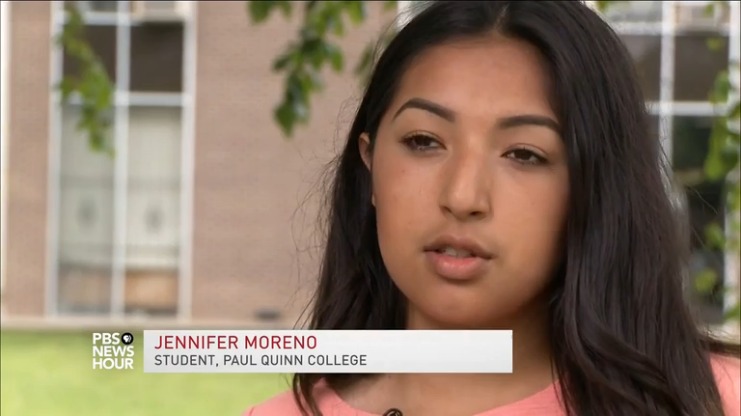
Share On Social!
Back in 2009 Paul Quinn College in Dallas, Texas, was about to go bankrupt, but President Michael Sorrell flipped the economic future of the school and the students by creating a farm out of the football field.
“Why should we tie everyone’s future to athletic success?” Sorrell asked PBS.
The school has not only been growing healthy food but has also been growing in the student Latino population, where 20 percent of incoming students in 2015 were Latino, Sorrell told The Atlantic.
Dallas, Texas with 39.5% Latino population, is mainly an urban population, where small college’s like Quinn College can open their doors to the growing college ready Latino population, explained Sorrell.
The farm is attended and worked on by students to help fund their education, feed populations in need and provide students valuable skills like work ethic, business practices, and time management skills.
Latina Jennifer Moreno, a freshman student at Quinn College, explained that the college was a really good option for her, as she was able to work on campus to help pay for her tuition.
All students are required to work during the first two school years to help pay off their tuition and open up doors for employment opportunities.
While recently helping recruit and retain Latino students, the college is also working to help alleviate food insecurity in the area, providing 10 percent of the school farms produce to surrounding underserved communities.
“We are in a food desert, there’s no grocery store for four miles. That’s real, people don’t have access to healthy food. We decided we have the ability to solve the problem and we’re gonna go solve the problem,” Sorrell explained to PBS.
Latino neighborhoods often have less access to healthier fresh produce.
In fact, Latino neighborhoods have only one -third supermarkets versus a non-latino neighborhood. With higher disparities in health and education Latinos are more likely to live in poverty and suffer from chronic diseases, studies show.
To find out more about disparities Latino families face and take action, read more here!
By The Numbers
142
Percent
Expected rise in Latino cancer cases in coming years



